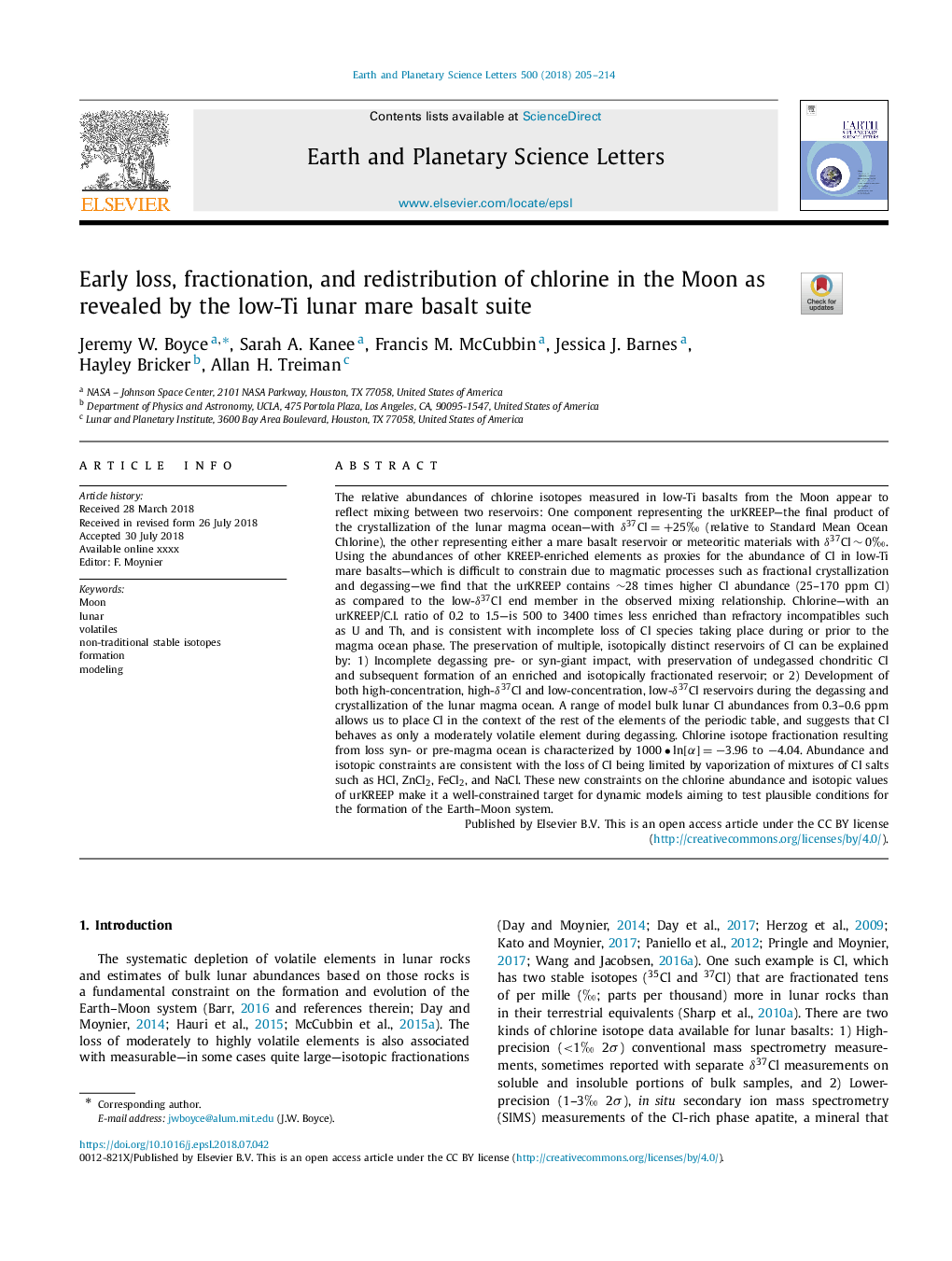| Article ID | Journal | Published Year | Pages | File Type |
|---|---|---|---|---|
| 8906668 | Earth and Planetary Science Letters | 2018 | 10 Pages |
Abstract
The relative abundances of chlorine isotopes measured in low-Ti basalts from the Moon appear to reflect mixing between two reservoirs: One component representing the urKREEP-the final product of the crystallization of the lunar magma ocean-with δ37Cl=+25â° (relative to Standard Mean Ocean Chlorine), the other representing either a mare basalt reservoir or meteoritic materials with δ37Clâ¼0â°. Using the abundances of other KREEP-enriched elements as proxies for the abundance of Cl in low-Ti mare basalts-which is difficult to constrain due to magmatic processes such as fractional crystallization and degassing-we find that the urKREEP contains â¼28 times higher Cl abundance (25-170 ppm Cl) as compared to the low-δ37Cl end member in the observed mixing relationship. Chlorine-with an urKREEP/C.I. ratio of 0.2 to 1.5-is 500 to 3400 times less enriched than refractory incompatibles such as U and Th, and is consistent with incomplete loss of Cl species taking place during or prior to the magma ocean phase. The preservation of multiple, isotopically distinct reservoirs of Cl can be explained by: 1) Incomplete degassing pre- or syn-giant impact, with preservation of undegassed chondritic Cl and subsequent formation of an enriched and isotopically fractionated reservoir; or 2) Development of both high-concentration, high-δ37Cl and low-concentration, low-δ37Cl reservoirs during the degassing and crystallization of the lunar magma ocean. A range of model bulk lunar Cl abundances from 0.3-0.6 ppm allows us to place Cl in the context of the rest of the elements of the periodic table, and suggests that Cl behaves as only a moderately volatile element during degassing. Chlorine isotope fractionation resulting from loss syn- or pre-magma ocean is characterized by 1000
- lnâ¡[α]=â3.96 to â4.04. Abundance and isotopic constraints are consistent with the loss of Cl being limited by vaporization of mixtures of Cl salts such as HCl, ZnCl2, FeCl2, and NaCl. These new constraints on the chlorine abundance and isotopic values of urKREEP make it a well-constrained target for dynamic models aiming to test plausible conditions for the formation of the Earth-Moon system.
- lnâ¡[α]=â3.96 to â4.04. Abundance and isotopic constraints are consistent with the loss of Cl being limited by vaporization of mixtures of Cl salts such as HCl, ZnCl2, FeCl2, and NaCl. These new constraints on the chlorine abundance and isotopic values of urKREEP make it a well-constrained target for dynamic models aiming to test plausible conditions for the formation of the Earth-Moon system.
Related Topics
Physical Sciences and Engineering
Earth and Planetary Sciences
Earth and Planetary Sciences (General)
Authors
Jeremy W. Boyce, Sarah A. Kanee, Francis M. McCubbin, Jessica J. Barnes, Hayley Bricker, Allan H. Treiman,
